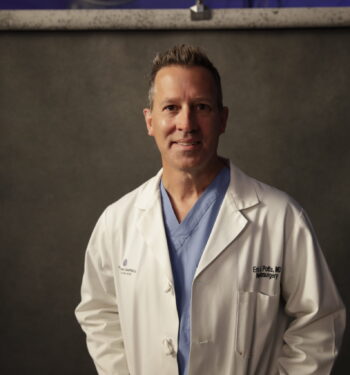December 16, 2016
In a healthy person bones continue to grow in strength and size until a person reaches their mid-30s, when peak bone mass is attained. In average bone regeneration, it takes about 90 days for old bone to be reabsorbed and replaced by new bone. Approximately 99 percent of the calcium in the body is stored in the bones and teeth. The other one percent is used to help carry out other essential bodily functions, such as enabling the heart and other muscles to contract. A deficient level of calcium in the blood causes the body to take the calcium it needs for these bodily functions from our bones in order to keep a constant level in the blood stream.
Osteoporosis is a metabolic or systemic disorder, which is age related and distinguished by a decrease in skeletal bone mass. This means that with osteoporosis the bone matter is chemically normal, but there isn’t enough of it. This disorder makes the vertebral body specifically susceptible to compression fractures from minor trauma.
Compression fractures often occur in the thoracic spine of elderly patients with osteoporosis. These fractures can occur from minor trauma and trivial daily activities because of diminished bone density. The compression fractures are often painful but resolve themselves over time. Treatment for these compression fractures is usually conservative, including bed rest, pain medication, and bracing.
Compression fractures can cause sharp back pain and cause people to become shorter or hunched over. Osteoporosis is sometime called the silent disease because bone loss has no symptoms and the disease usually remains painless until a bone breaks.
Although it is rare, a single level compression fracture can cause a kyphotic deformity, which is characterized by a severe forward curvature of the spine and can be accompanied by neurologic compression. More often, multiple, adjacent level compression fractures lead to significant loss of balance accompanied by a potential for catastrophic neurologic injury. These fractures are normally difficult to treat because the patients are usually in poor health and bone density has decreased to a point where it’s difficult for their bodies to repair the bone.
Secondary forms of osteoporosis can occur because of drug treatment, various endocrine disorders, dietary problems and other diseases. These forms of secondary osteoporosis can usually be corrected by treating the underlying disorder or discontinuing the medication causing osteoporosis.
Osteoporosis can be detected before a fracture occurs by a specialized test that measures the mineral density of the bone. It is recommended to get a bone density test if you have any of the following risk factors:
- Female
- Advanced age
- Family history of osteoporosis
- Postmenopausal
- Eating disorder or low calcium diet
- Use of medications such as steroids or anticonvulsants
- Inactive lifestyle
- Smoker
- Excessive alcohol use
The current annual cost for the treatment of osteoporosis is $14 billion. The key to treatment is early detection and prevention. For prevention, the national Osteoporosis Foundation suggests the following:
- Eat a balanced diet rich in calcium and Vitamin D
- Regularly do weight bearing exercises
- Lead a healthy lifestyle without smoking or excessive alcohol use
- Have bone density testing if you are at risk and take preventative medication if directed by your doctor.
New treatments are currently being developed to help control the pain of patients with osteoporosis and help to prevent the collapse of adjacent vertebral levels and help to correct some types of deformity.
All adults should take in at least 800 milligrams of calcium daily to maintain adequate calcium levels in the body. It is even recommended by some sources that women take 1,200 milligrams daily.
A decrease in the intake of sodium can also help maintain healthy bone mass. Sodium can strip bones of their calcium.
Exercise, especially strength/resistance training and or lifting weights regularly can help build strong bones. It is recommended that people do some kind of cardiovascular exercise and strength training at least three times a week throughout their life to help combat bone loss. The earlier people start exercising and strength training the better.
The materials on this Web site are for your general educational information only. Information you read on this Web site cannot replace the relationship that you have with your health care professional. We do not practice medicine or provide medical services or advice as a part of this Web site. You should always talk to your health care professional for diagnosis and treatment.
Unless Noted Otherwise, All Articles and Graphics Copyright ©2008, Medtronic Sofamor Danek, All Rights Reserved.



